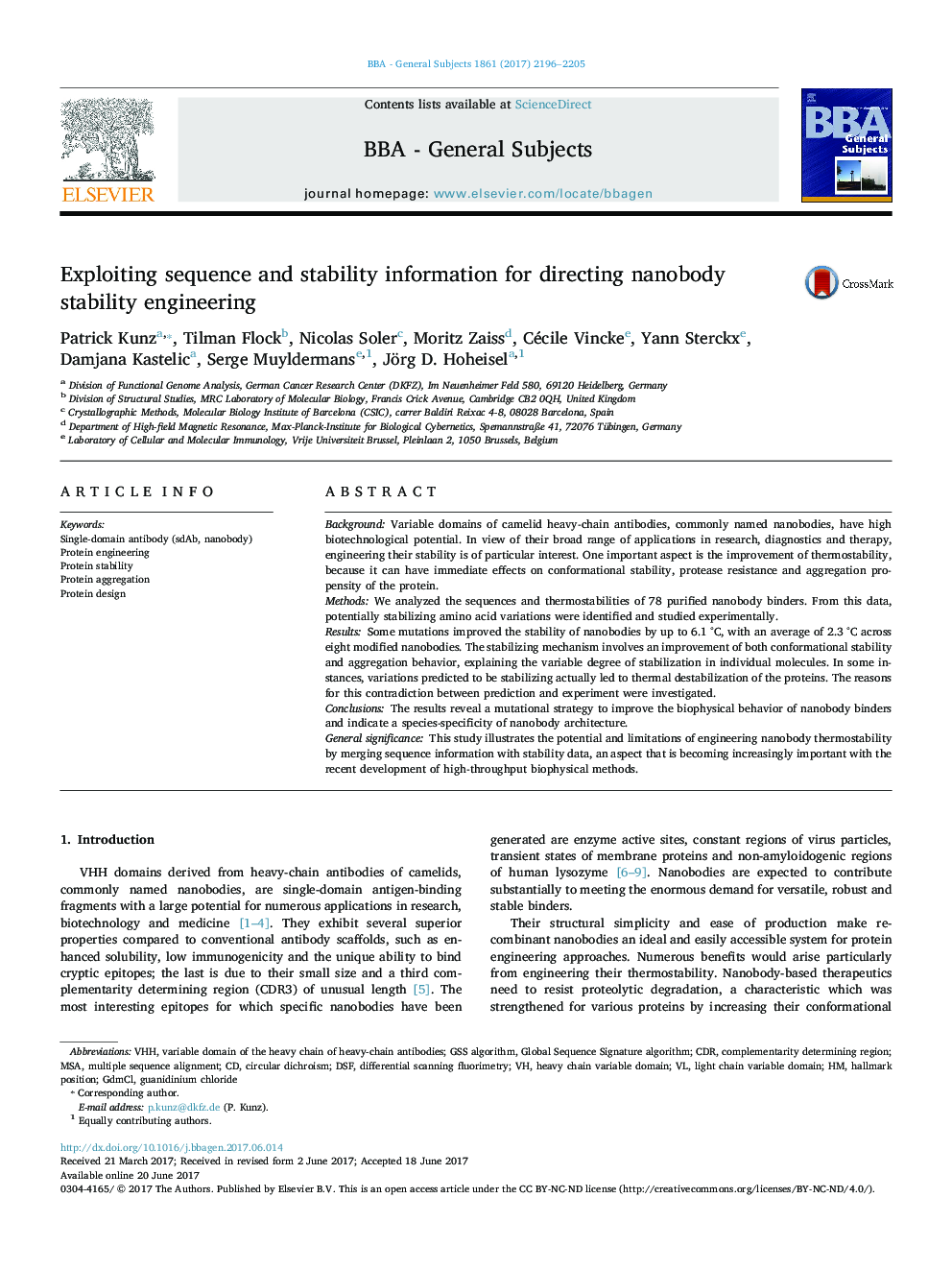| Article ID | Journal | Published Year | Pages | File Type |
|---|---|---|---|---|
| 5507945 | Biochimica et Biophysica Acta (BBA) - General Subjects | 2017 | 10 Pages |
â¢Nanobody thermostability is engineered combining sequence and stability information.â¢The mechanism of stabilization improves stability and aggregation behavior.â¢A species-specificity of nanobody architecture is proposed.
BackgroundVariable domains of camelid heavy-chain antibodies, commonly named nanobodies, have high biotechnological potential. In view of their broad range of applications in research, diagnostics and therapy, engineering their stability is of particular interest. One important aspect is the improvement of thermostability, because it can have immediate effects on conformational stability, protease resistance and aggregation propensity of the protein.MethodsWe analyzed the sequences and thermostabilities of 78 purified nanobody binders. From this data, potentially stabilizing amino acid variations were identified and studied experimentally.ResultsSome mutations improved the stability of nanobodies by up to 6.1 °C, with an average of 2.3 °C across eight modified nanobodies. The stabilizing mechanism involves an improvement of both conformational stability and aggregation behavior, explaining the variable degree of stabilization in individual molecules. In some instances, variations predicted to be stabilizing actually led to thermal destabilization of the proteins. The reasons for this contradiction between prediction and experiment were investigated.ConclusionsThe results reveal a mutational strategy to improve the biophysical behavior of nanobody binders and indicate a species-specificity of nanobody architecture.General significanceThis study illustrates the potential and limitations of engineering nanobody thermostability by merging sequence information with stability data, an aspect that is becoming increasingly important with the recent development of high-throughput biophysical methods.
